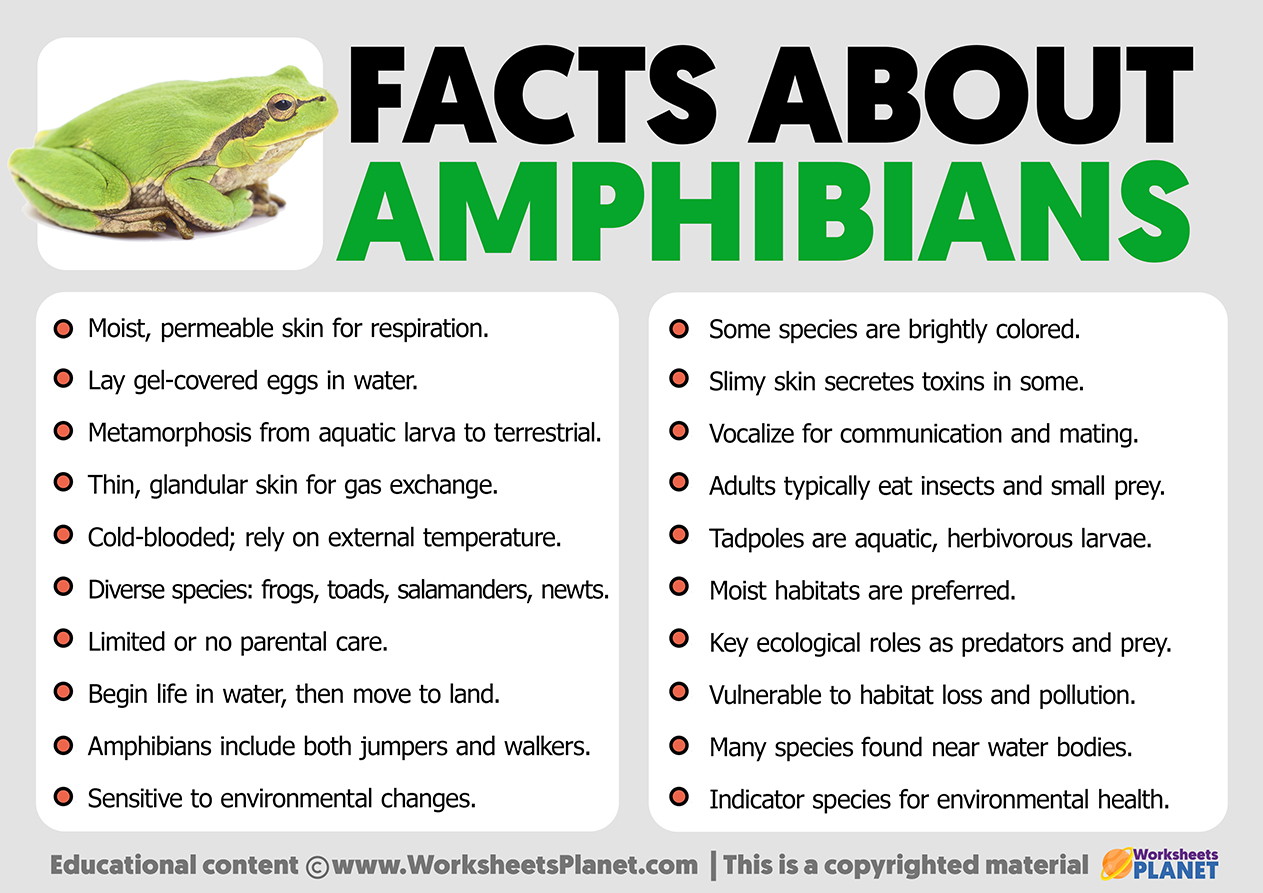Amphibians are cold-blooded vertebrate animals (same as reptiles) that live part of their lives in water and part on land.
They typically have moist, permeable skin and undergo metamorphosis, transitioning from aquatic larvae (e.g., tadpoles) to terrestrial adults (e.g., frogs and salamanders).
Amphibians are sensitive to environmental changes and serve as indicators of ecosystem health. They play roles as both predators and prey, and their survival is threatened by habitat loss and pollution.

2o amazing facts and characteristics about amphibians
- Moist, permeable skin for respiration.
- Lay gel-covered eggs in water.
- Metamorphosis from aquatic larva to terrestrial.
- Thin, glandular skin for gas exchange.
- Cold-blooded; rely on external temperature.
- Diverse species: frogs, toads, salamanders, newts.
- Limited or no parental care.
- Begin life in water, then move to land.
- Amphibians include both jumpers and walkers.
- Sensitive to environmental changes.
- Some species are brightly colored.
- Slimy skin secretes toxins in some.
- Vocalize for communication and mating.
- Adults typically eat insects and small prey.
- Tadpoles are aquatic, herbivorous larvae.
- Moist habitats are preferred.
- Key ecological roles as predators and prey.
- Vulnerable to habitat loss and pollution.
- Many species found near water bodies.
- Indicator species for environmental health.

